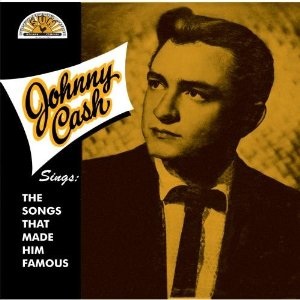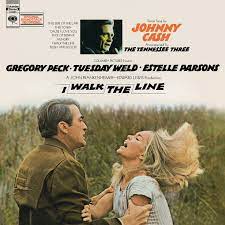Tutorial Pricing: $3.25ea OR any 10 for $10
(use code "Any10410" at checkout)
Paid Requests for $25ea
(comes with any 8 freebies -> so 9 for $25)
100's Of Free Demos & Chord Sheets
Johnny Cash Best Songs
On The Acoustic
Here on my Johnny Cash best songs page is a list of 13 great songs from the mana in black, and links to 26 more that will help you learn a large pool of songs.
Free overview demos, chord sheets and more are here for you to explore.
Help yourself to the free pdf chord sheets. If you require full tutorial lessons for these songs below, there is a purchase link for a small fee.

Feb 26th, 1932 – Sep 12th, 2003 (Age 71)
Johnny Cash Museum Nashville
11 Johnny Cash Greatest Hits
11 Johnny Cash Top Songs
Jump links to quickly access the songs sections.
Johnny Cash Best Songs
Chords, Lyrics, Demos, Tutorials
1. 16 Tons

16 Tons comes from the 1987 album from Johnny Cash called Johnny Cash Is Coming To Town.
The song was written by Merle Travis and first recorded by him in 1946.
Johnny Cash never released the song as a single.
Tennessee Ernie Ford also did a version in 1955 and the song has been covered by numerous artists including Eddy Arnold, Bo Diddly and Red Sovine to name a few.
I play this one in standard tuning with a few picking riffs scattered throughout. The rhythm pattern you'll need is a
root down root up down up
using the chords
Am, Am/G, Am/Gb, E7 and a Dm.
Jump To Top
2. A Boy Named Sue

A Boy Named Sue was written by Shel Silverstein, who wrote many songs for Dr. Hook. This track appeared on the 1969 album Johnny Cash At San Quentin, a state prison in California.
The track did reach the top of the country charts and made it onto the Billboard Hot 100 list and was his only song to make it there.
This one can be played with a capo on the 3rd fret with a
root down up down up down up and repeat rhythm pattern but there is no lead work here. The chords you'll need are G, C7 and a D7.
Jump To Top
3. Aint No Grave

Ain't No Grave is a poignant and spiritually charged song with a unique history. Originally penned by 12-year-old Claude Ely, who was battling tuberculosis in 1934, the song took on new life when Johnny Cash recorded his version in 2003, shortly before his passing.
The track, featured on Cash's album "American IV," carries a profound sense of mortality and transcendence, reflecting Cash's deep connection to spiritual themes in his later works. Remarkably, the release of Cash's rendition occurred posthumously, adding an additional layer of significance to the song.
This one I play with Drop D Tuning using the Dm, Gm and Am chords. There is some picking in this song while playing the rhythm pattern root down root up down up and repeat.
Jump To Top
4. Ballad Of A Teenage Queen

Ballad Of A Teenage Queen is a catchy and heartwarming song by Johnny Cash, released as a single in 1958 from the album "Sings the Songs That Made Him Famous." The song, just a little over 2 minutes long, swiftly climbed to the top spot on the US country charts, showcasing Johnny Cash's widespread appeal.
The lyrics tell the charming tale of a small-town girl who becomes a teenage queen, capturing the dreams and aspirations of youth in a nostalgic and melodic way.
"Ballad of a Teenage Queen" reflects Cash's ability to tell compelling stories through his music and remains a classic in the country music genre.
I play this song with a capo on the 3rd fret with a root down root up down up and repeat rhythm pattern. There is some acoustic lead in here with the chords G, C and D.
Jump To Top
5. Big River

Big River was also released as a single from the 1958 album Johnny Cash Sings The Songs That Made Him Famous.
This track peaked at #4 on the country charts. There was a verse omitted from the original recording but there are some versions out there with the missing verse included.
Artists who have covered this song over the years include, Ian Tyson, Hank Williams Jr and The Grateful Dead to name a few.
You can play this song in Drop D Tuning with the rhythm pattern
root down up down up down up and repeat. There is a picking sequence in this one to learn while playing the chords
E, Gb, A and B7.
Jump To Top
6. Cocaine Blues

Cocaine Blues is a compelling song by Johnny Cash, first released as the B-side to the 1979 single "I'll Say It's True." While the single reached a respectable position at #42 on the charts, it's the vivid storytelling and energetic performance of "Cocaine Blues" that captures listeners' attention.
The song can also be found on Cash's album "Silver," showcasing his versatility in blending country, folk, and rock influences. "Cocaine Blues" tells the tale of a man who finds himself in a difficult situation after a night of indulgence, providing a gritty narrative that reflects Cash's ability to tackle darker themes in his music.
I play this one in standard tuning using the chords C, G7 and F with a root down bass down and repeat rhythm pattern. There is a bit of picking in this one as well.
Jump To Top Of Johnny Cash Best Songs
7. Cry Cry Cry

Cry Cry Cry was a single from the Johnny Cash debut album from 1955. The song peaked at #14 on the US Country charts.
This song came from the album Johnny Cash And His Red Hot Blue Guitar and was one of the first albums ever issued on Sam Phillips' Sun Records label.
I like to use a Drop D Tuning for this song and a capo on the 3rd fret. The rhythm pattern you'll need is a
root down up down up down up and repeat
while playing the chords D, E, A, and a G. There is a bit of picking in this lesson.
Jump To Top
8. Delia's Gone

Delia's Gone is a haunting and somber song covered by Johnny Cash in 1994 for his album "American Recordings." The song tells a tragic story, as it was inspired by the real-life murder of a 14-year-old girl named Delia Green.
Cash's rendition of the song brings a raw and emotional depth to the narrative, capturing the darkness and intensity of the tale. While "Delia's Gone" didn't achieve chart success, its power lies in Cash's ability to convey the emotional weight of the story through his evocative vocals and minimalistic instrumentation.
The song is part of
Cash's "American Recordings" series, which marked a period of creative
resurgence for the artist.
I play this song in standard tuning using a root down up root up down up and repeat rhythm pattern. There is no picking in this song, just rhythm while using the chords A, D, A7, B7 and E.
Jump To Top
9. Flesh And Blood

Flesh And Blood is a standout single from Johnny Cash's 1970 album "I Walk the Line." This evocative song reached an impressive #1 on the charts in both Canada and the United States, attesting to its widespread popularity.
The track showcases Cash's signature deep voice and heartfelt delivery, adding a personal touch to the lyrics. "Flesh and Blood" delves into themes of love and connection, exploring the depth of human relationships.
"Flesh and Blood" remains a testament to Johnny Cash's enduring influence and his ability to create music that speaks to the human experience.
This number can be played in standard tuning with a root down root up down up and repeat rhythm pattern. You'll have a bit of picking in this song and you'll need the C, F, C7, D7 and G chords.
Jump To Top
10. Folsom Prison Blues - (free lesson)

Folsom Prison Blues page is here.
11. Get Rhythm

Get Rhythm was originally released as the B-side to the single to I Walk The Line back in 1956 and was not a track on the original album Johnny Cash And His Red Hot Blue Guitar album but was added later as a bonus track when the album was re-released.
I use a Drop D tuning in this one with a capo on the 2nd fret. For rhythm you'll want to play a
root down up down up down up with some walking bass. There is a bit of lead picking in this song with the chords D, G and A.
Jump To Top
12. Ghost Riders In The Sky

Ghost Riders In The Sky is a cowboy song written back in 1948 by a man named Stan Jones. Johnny Cash recorded the song for his 1979 album Silver.
The song peaked at #2 on the country charts for Johnny Cash.
Others who recorded the song were The Blue Brothers, Bing Crosby and Burl Ives to name a few.
You can play this song in standard tuning with a capo 2nd fret with the chords Am, F and C. There are a few riffs to pick out while using the rhythm pattern
root down up down up down up and repeat.
Jump To Top
Thanks for stopping by my Johnny Cash best songs page and I hope the info here was helpful. If your planning on visiting Nashville, be sure to check out the Johnny Cash Museum. See details below.
If you liked this Johnny Cash best songs page you might also like ... (click images)
Johnny Cash Documentary
Very Easy Country Guitar Songs


